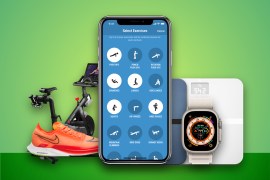Can DIY blood testing give you a heads up on your health?
It's what's inside that counts
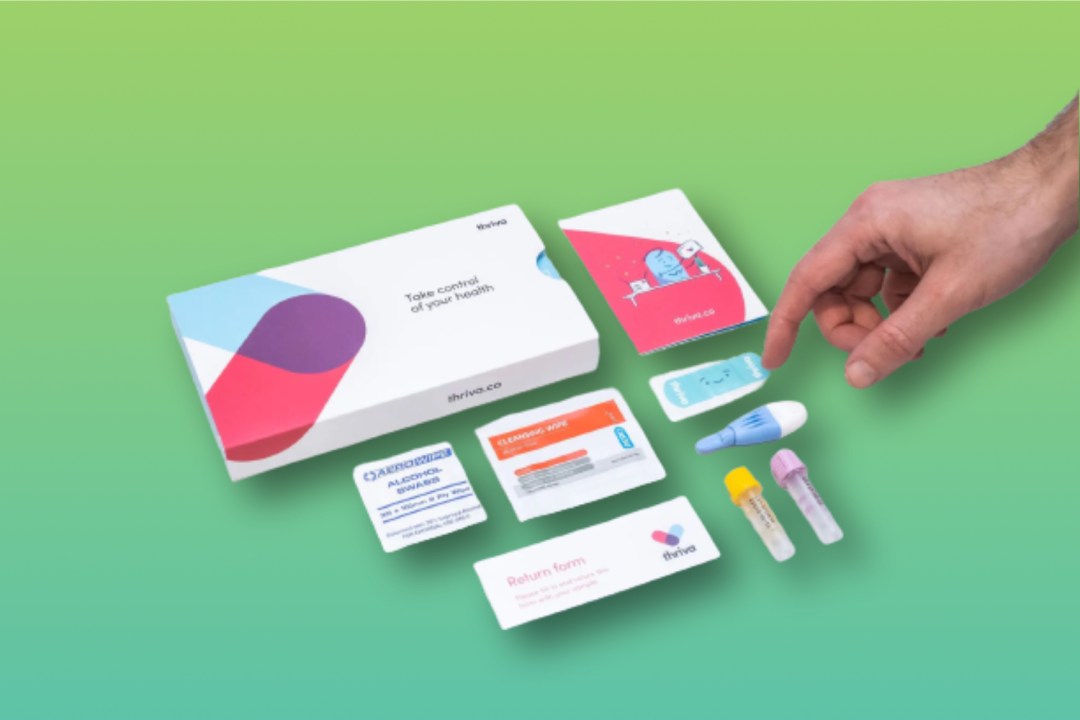
We’re at a stage now where you can learn more about your body than ever before. From smart sensors that stick in your arm to brainy rings that monitor your heart rate, there are plenty of gadgets you can gear up with to gather health data. But what about what’s going on inside of you? Don’t worry, that’s not been forgotten either. At-home blood testing kits, such as those offered by Thriva, provide a more insightful look at your health.
With a simple finger prick, you can collect blood samples to send away to the clever clogs in the lab. They’re not allowed out much, but they can read your blood works pretty well. After crunching the numbers, you get a full health report sent back to you, on the lookout for certain ailments and how well your bod’s ticking along.
Pricing often errs towards £100 and upwards, offering this extra health insight for a pretty penny. This does cover quite a lot, mind you: the gear in the kit, postage, testing, and health analysis. But it does make these health kits more of a serious commitment – you have to really want to get to know your body.
But does this extra data actually come in handy? Or are you looking at more numbers with no idea what to do next? We’ve tested this out for ourselves, sacrificing blood to the Thriva folk in the name of… science(ish).
The kit and blood testing process
In the Thriva box, you’ll get sample tubes, cleaning wipes, and the finger prick test. If you’ve ever done any other at-home blood tests for medical reasons or DNA testing, this should all feel pretty familiar. And if you haven’t the process isn’t too hard to get to grips with. Thankfully, Thriva includes both written instructions with pictures and a video, so there won’t be any “wonky IKEA shelves” moments with needles involved. All the steps are quite detailed, so total newbies have nothing to worry about.
The sample process itself is pretty quick. Essentially, you need to sterilise the area with hot soap and water, get your blood pumping, and set up the sample collection. Once you’re ready, press down on the test, and you’ll feel a sharp prick as the needle makes a small hole in your finger. From there, you’ll need to milk (an awful phrase, but the official one) the blood down your finger and into the sample tubes. After that, box it all up and pop it in the post.
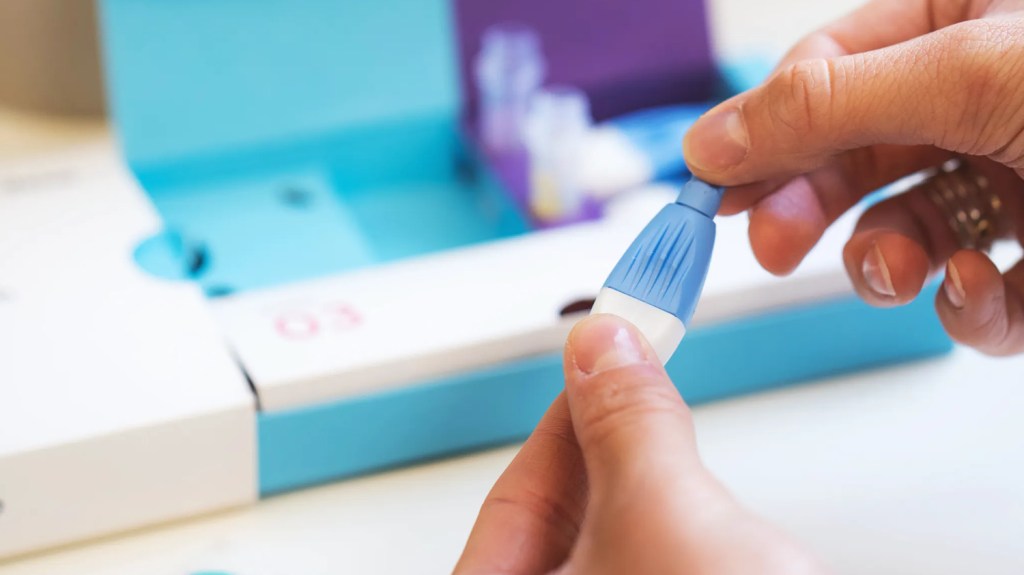
It’s all a lot simpler than it sounds, so don’t worry if the process sounds a little complicated. The prick itself doesn’t hurt as much as you’d expect. It’s a similar feeling to getting an injection – the ol’ sharp scratch. Once received in the post, the brainy bunch over at Thriva get to work crunching the numbers. And within a few days, you’ll be sent over your data in the app.
What sort of data gets sent back?
When you hear the word data, you’ll be thinking of huge numbers and complicated graphs if you’re anything like us. Thankfully, Thriva cuts through all the jargon, and explains what the measurements actually mean. Alongside each result, you’ll get a handy analysis that explains everything in simple terms – all of which is reviewed by a doctor. Precisely what data you get back depends on the tests you selected for your package.
In our package, we tested a range of different markers, including the liver, thyroid, cholesterol, vitamin D, testosterone, and diabetes. Everything first gets a rating from Abnormal, Normal, and Optimal. Any abnormal results automatically produce a prompt to see a doctor, just to make sure everything’s alright.
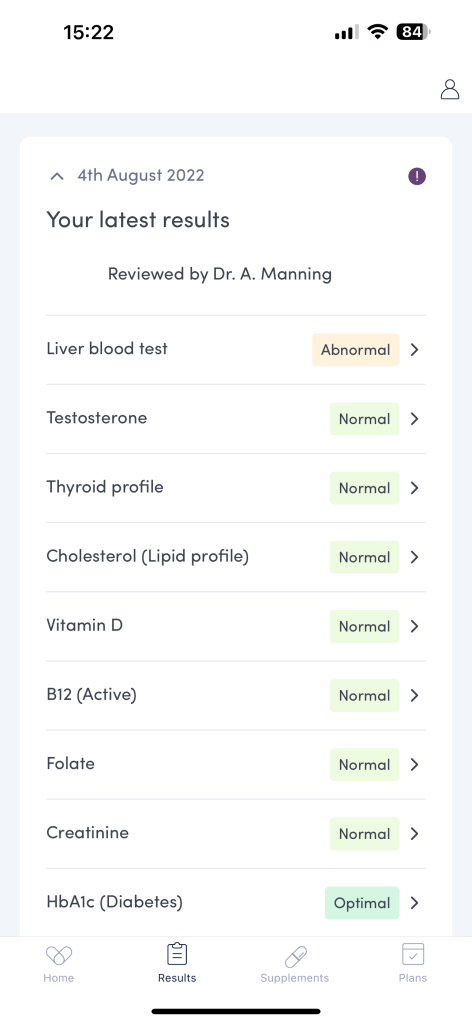
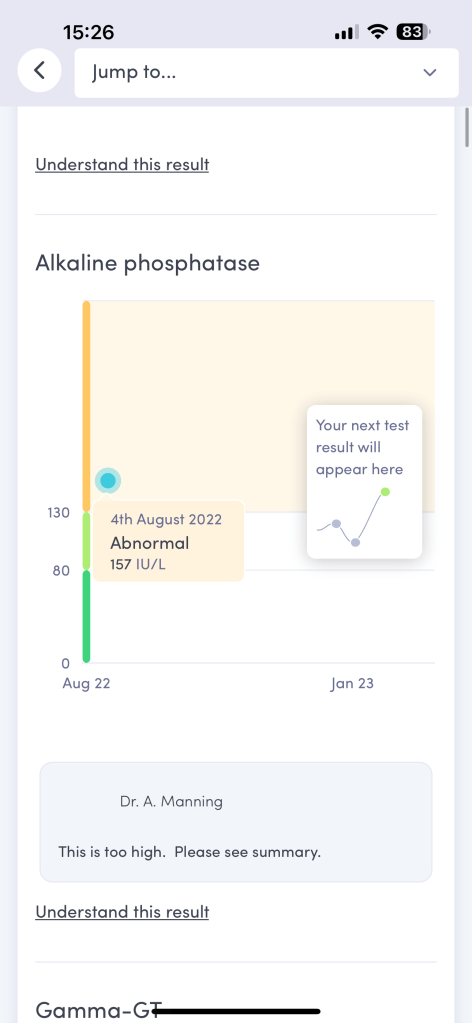
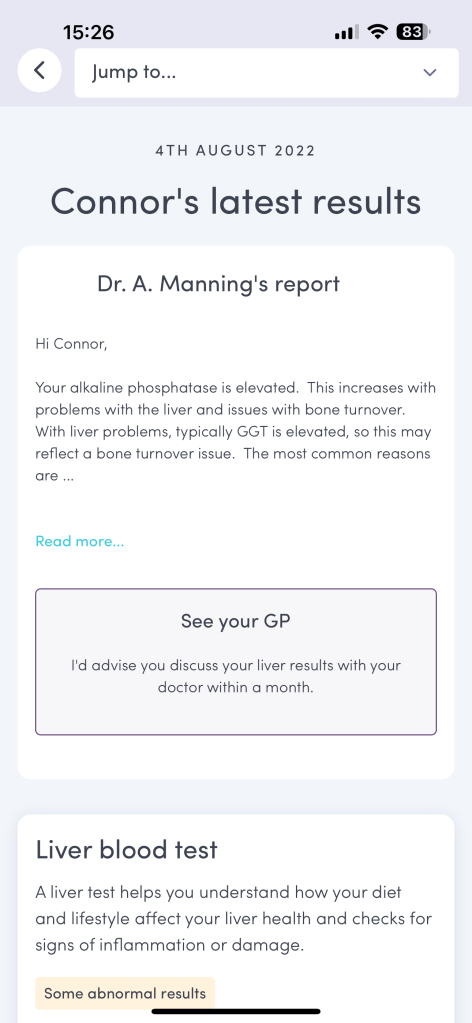
For example, my liver blood test showed “the ALT liver enzyme as marginally above the normal range”. While I haven’t a clue what this means, my health report explained it could be due to alcohol consumption – somewhat expected for a 20-something year old. It then went on to tell me how to correct this measurement, and what its effects could be.
How useful really are all these numbers?
The data you get sent back is certainly interesting, but just how useful are all the numbers? Numbers themselves – not so useful. But Thriva’s analysis and easy-to-understand explanations make things a whole lot more useful. You can see body markers that you otherwise wouldn’t unless opting for private healthcare blood tests. This can help you identify potential health problems early, so you can get on top of them.
Throughout the whole process, Thriva reminds you to discuss things with your GP, as results might not be 100% accurate for a number of reasons. It also recommends you re-test every few months, so you can track results over time. Sure, these home kits won’t replace doctors anytime soon, but it’s reassuring to be able to take more in-depth measures for your health.
The result? A big leg up for preventative health. But is this sort of thing essential? Probably not. Health is certainly something to take seriously, and we welcome the opportunity to do so. However, not testing won’t put you at any greater risk of falling ill – you just might not notice as quickly.
